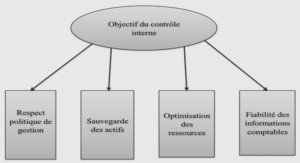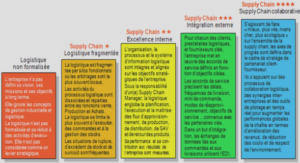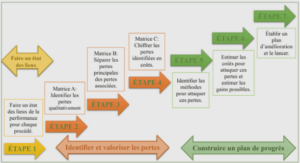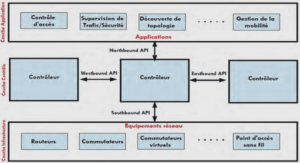The Intelligent Transportation System (ITS) that includes all types of communications between vehicles is an important next-generation transportation system. ITS provides many facilities to the passengers, such as safety applications, assistant to the drivers, emergency warning, etc. Vehicular Ad Hoc NETwork (VANET) is a derived form of self-organized Mobile Ad Hoc NETwork (MANET). In VANET, vehicles are equipped with an On-Board Units (OBUs) that can communicate with each other (V2V communications), and/or with stationary road-side units (V2I) that are installed along the roads. VANETs have several characteristics that makes it different from MANETs, such as high node mobility, predictable and restricted mobility patterns, rapid network topology change, and frequent battery charging, so energy consumption is not a big issue in VANET (Tayal & Triphathi (2012)).
Dedicated Short Range Communication (DSRC) technology is an emerging technology that is developed to work in very high dynamic networks, to support fast link establishment and to minimize communication latency. DSRC is designed to ensure the reliability of safety applications, taking into consideration the time constraints for this type of applications. In the United States, Federal Communication Commission (FCC) has allocated 5.9GHz for DSRC technique to support public and commercial application in V2V and V2I. The frequency takes the range of (5.850 5.925) GHz and divides it into seven non-overlapping 10MHz channels. The DSRC is developed to support the data transfer in a rapidly changing topology networks, such as VANET, where time response and the high transmission rate is required. VANETs deal with two wireless access standards: IEEE 802.11p deals with the physical and MAC layer, and IEEE 1609 deals with higher-layer protocols. According to IEEE 802.11p, vehicles are capable to share their GPS related position together with velocity and acceleration (reference:551 (2010)).
VANET is proposed and adapts different types of routing protocols, such as proactive(Spaho et al. (2012)), reactive(Ding et al. (2011); Abedi et al. (2009); Yu et al. (2011)), hybrid (Wu et al. (2013) Chai et al. (2013)), and geographic-based routing protocols (Liu et al. (2008); Luo & Zhou (2011)). The proactive and reactive routing protocols are classified under the topology based routing protocol category, which aims to discover the route between the source and destination before starting the data transmission. The main difference between the two is that the proactive routing protocol initiates a route discovery to all nodes located in the entire network, yielding an increase in control overhead messages and end-to-end delay. While in the reactive routing protocol, a source node initiates a discovery process to reach only the desired destination. This process reduces the control overhead messages; however, the route discovery process is required in finding a route for every new node. The hybrid routing protocol combines the features of both proactive and reactive routing protocol. The nodes in the hybrid network are grouped together in a particular area called clusters. Hybrid routing protocols, sometimes called Cluster Based Routing (CBR) protocols, are designed to improve the network scalability by allowing the nodes within the clusters to communicate through a pre-selected Cluster Heads (CHs) using a proactive routing protocol. However, in the case of communication between clusters, a reactive routing protocol is triggered.
Geographic-based routing protocols or Location-based routing protocols combine the position information with topological knowledge of the actual road map and surroundings. In geographic-based routing protocols, the data is transmitted directly from the source to the destination without initiating any route discovery process. Therefore, each forwarding node assumes to know the following: its current location (using GPS), neighbors locations (by periodically exchanging of Hello messages), and destination location (by using location service protocol(Camp et al. (2002))).
Intersection-based Geographical Routing Protocol (IGRP) is a location-based routing protocol, which is suitable to urban environments. IGRP (Saleet et al. (2011)) is based on an effective selection of road intersections a packet must follow to reach the desired destination. This protocol is characterized by selecting the routes with high route stability. In addition it satisfies QoS constraints with tolerable delay, bandwidth usage, and error rate.
CBR protocols are widely used to improve the scalability of VANET environment and to reduce the control overhead message. Although the clustering techniques are minimizing the routing control overhead messages, frequent CH elections increase the control overhead messages associated with the re-election process. The control overhead messages are produced by: First, exchanging of HELLO messages between the CMs and the CH, and second, the CH ADvertiSement (CHADS) messages broadcasted periodically by the CH. When control overhead messages are increasing in a cluster topology, it reduces the available bandwidth resources.
Cluster-Based Life-Time Routing (CBLTR) Protocol
Cluster dividing
The segment is a bidirectional road, and each segment is divided into multiple clusters that equal half of the transmission range of a standard vehicle(Song et al. (2010)). We assume that all vehicles have a predefined knowledge of cluster coordination and identification. Each vehicle must be assigned to one cluster at each unit of time based on its location, and with a unique ID for each vehicle and cluster.
Cluster Head (CH) election
Each vehicle that enters a predefined stationary cluster zone should periodically calculate specific cost value, which is called Life-Time (LT). The LT of each vehicle depends on the current velocity of the vehicle as well as the distance to the predefined directional cluster edge (using an Euclidean distance equation). The vehicle with the maximum LT is elected as a CH, then it remains as the CH till it arrives at the directional threshold point; this means there are no new election until the current CH arrives at the predetermined directional threshold point. The directional threshold point is defined as a point distant from the directional edge of the cluster. The distance that separates these two points is calculated by considering the CH velocity, and the time it takes to proceed until the re-election process. The distance from the directional threshold point to the directional edge of the cluster must be enough for a CH vehicle to handover the CH function to another vehicle without losing the communication. This ensures that any vehicle in each cluster can successfully complete the re-election process. For example, if the handover time (re election time and the time to forward the CH information to the new CH) is equal to 0.2s, then, the threshold distance (Dth) is calculated dynamically based on the current CH velocity. Equation 1.1 shows and illustrates the calculations of the threshold distance in each specific cluster. Dth(CID) = VCH(CID)×HOT (1.1)
Where:
Dth(CID) : Threshold Distance for specific cluster.
VCH(CID) : CH Velocity for specific cluster.
HOT: Hand-Over Time.
CID: Cluster IDentification.
Intersection Dynamic VANET Routing (IDVR) protocol
IDVR is a new Intersection Dynamic VANET Routing protocol. There are two main contributions of this protocol. First, we use the CHs in relaying the packets from the source to the destination; then the CHs are selected based on maximum LT. By relaying the packets via CHs, we increase the segment stability and reduce the probability of link failure (Abuashour & Kadoch (2016)). Second, we propose an Intersection Dynamic VANET Routing (IDVR) protocol, which computes the optimal route to the destination taking into account the real-time traffic from source to destination, and the current source and destination intersection location. The IDVR algorithm works in real-time and recursively operates at each intersection until it arrives at the final destination. Our objectives are to increase the route stability and average throughput, and to reduce end-to-end delay in a grid topology scenario. In the next subsections, we analyze the methodology we followed to achieve our objectives.
Software Defined Network (SDN)
A Software Defined Network is used to provide flexibility to networks and to introduce new features and services to VANETs. Ian Ku et al. (Ku et al. (2014)) evaluate the performance of SDN-based VANET architecture with other traditional MANET/VANET routing protocols, including GPSR, OLSR, AODV, and DSDV. The results show that the PDR is much higher when adopting SDN in VANET environments.
INTRODUCTION |






